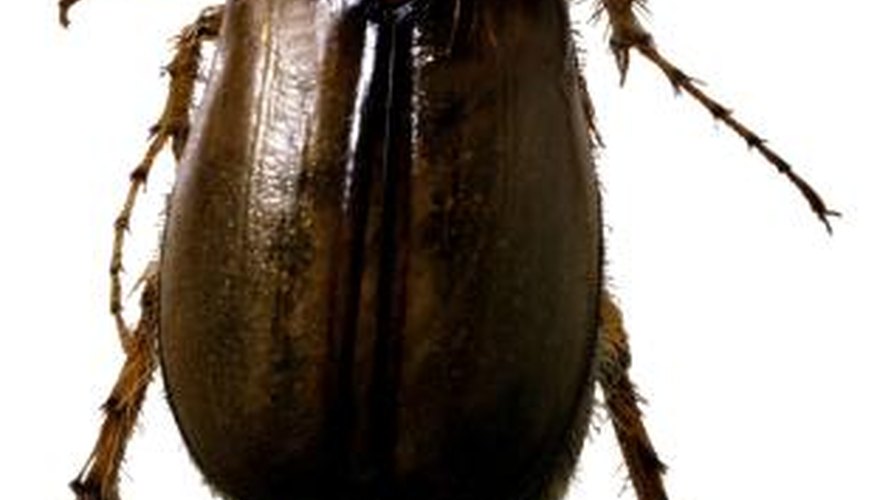Egg-laying insects deposit their eggs in many different places. Some do so in above-ground nests and others inside host animals or attached to plants. Still others choose to lay their eggs underground. Many types of bugs, from beetles to wasps, choose underground egg-laying as their means of reproduction.
June Beetles
The term June beetle can be applied to more than 100 species of beetles, each one similar in appearance. They also all lay their eggs underground. Female June beetles dig 2 to 5 inches into topsoil in order to deposit their eggs, covering them over with dirt afterwards. It takes three to four weeks for the larvae to hatch. These larvae spend their time in the soil, where they pupate 3 to 6 inches underneath. Adult June bugs crawl out of the soil and live their life aboveground.
- The term June beetle can be applied to more than 100 species of beetles, each one similar in appearance.
- Female June beetles dig 2 to 5 inches into topsoil in order to deposit their eggs, covering them over with dirt afterwards.
Yellow Jacket
Wasps lay their eggs in nests made of various materials, depending on the species. Most wasps do not lay their eggs underground, but there are exceptions, namely with the yellow jacket. These wasps build underground nests and deposit their eggs in cells within that nest. These eggs are white and shaped like sausages. The eggs only take a few days to hatch, and then it's the queen's job to feed the larvae insects until they mature, pupate and become adult yellow jackets.
- Wasps lay their eggs in nests made of various materials, depending on the species.
- Most wasps do not lay their eggs underground, but there are exceptions, namely with the yellow jacket.
Mole Crickets
Certain species of crickets, like the tawny mole cricket from the southeast United States and southern South America, lay their eggs underground. They do this during one period of the year, between April and June. Females dig chambers 4 to 12 inches underground and lay eggs in clutches of anywhere between 24 and 60 eggs. Chambers are closed off and eggs are left to incubate for about three weeks before hatching.
- Certain species of crickets, like the tawny mole cricket from the southeast United States and southern South America, lay their eggs underground.
- Chambers are closed off and eggs are left to incubate for about three weeks before hatching.
Spiny Leaf Insect
The spiny leaf insect has an interesting way of getting its eggs underground. The female deposits eggs on the top of the ground, but not with the intention of leaving them there. These eggs have a knob called a capitulum, which attract ants. Ants carry these eggs into their underground nests and eat the capitulum, but leave the rest of the eggs intact. After one to three years, the eggs hatch, releasing nymphs that crawl up out of the ground in search for leaves to feed on.
- The spiny leaf insect has an interesting way of getting its eggs underground.
- The female deposits eggs on the top of the ground, but not with the intention of leaving them there.
